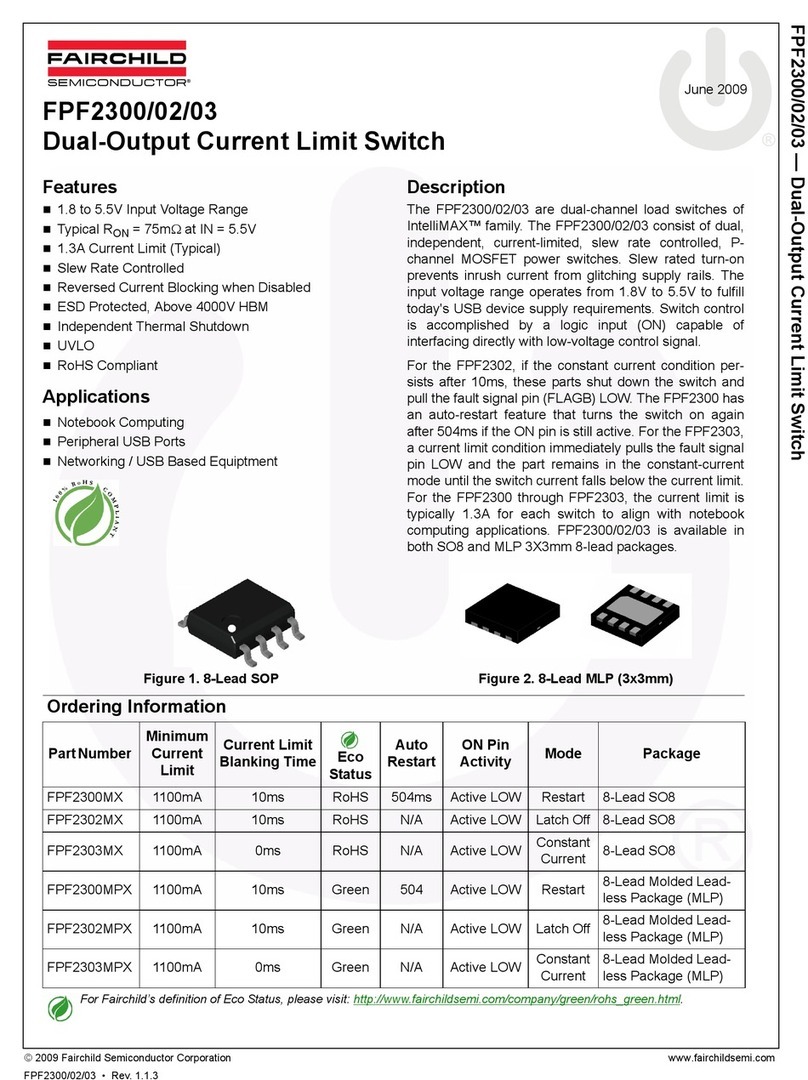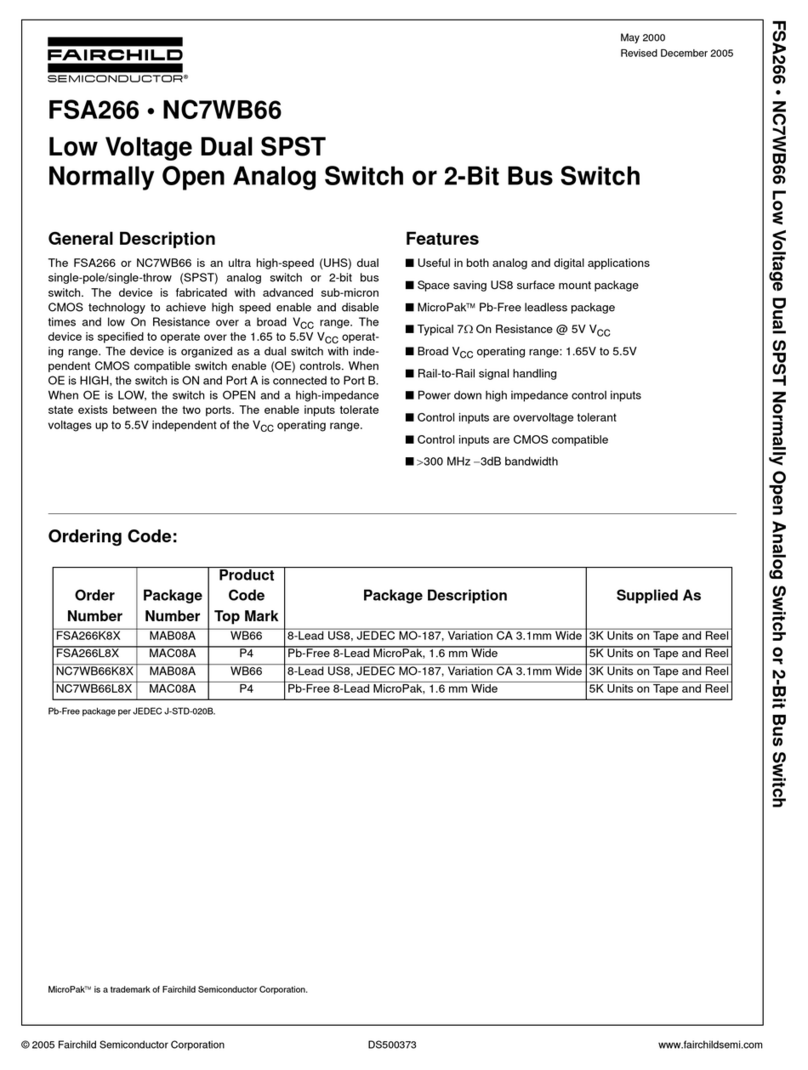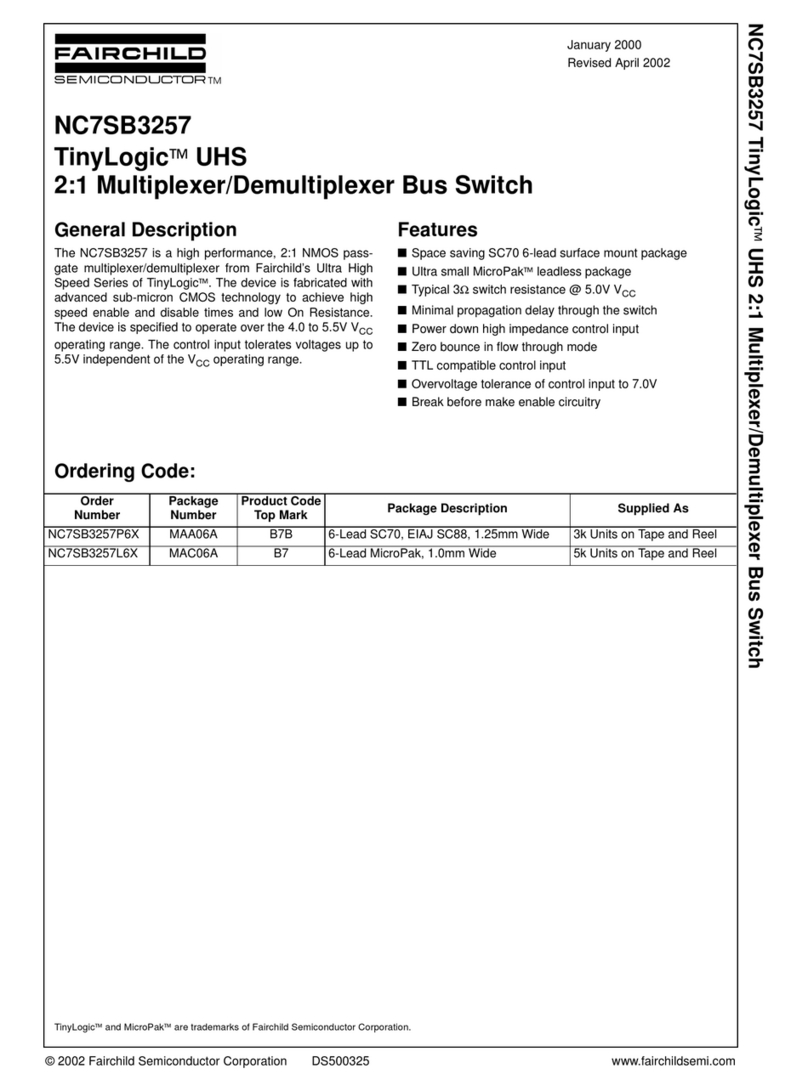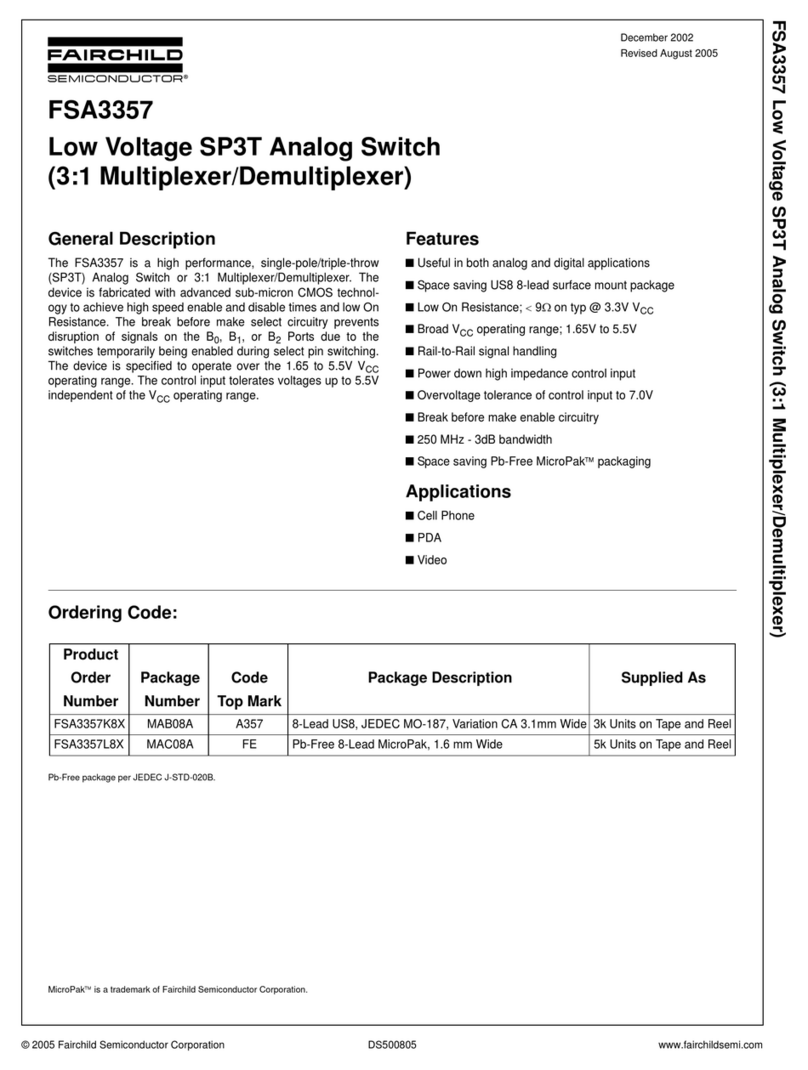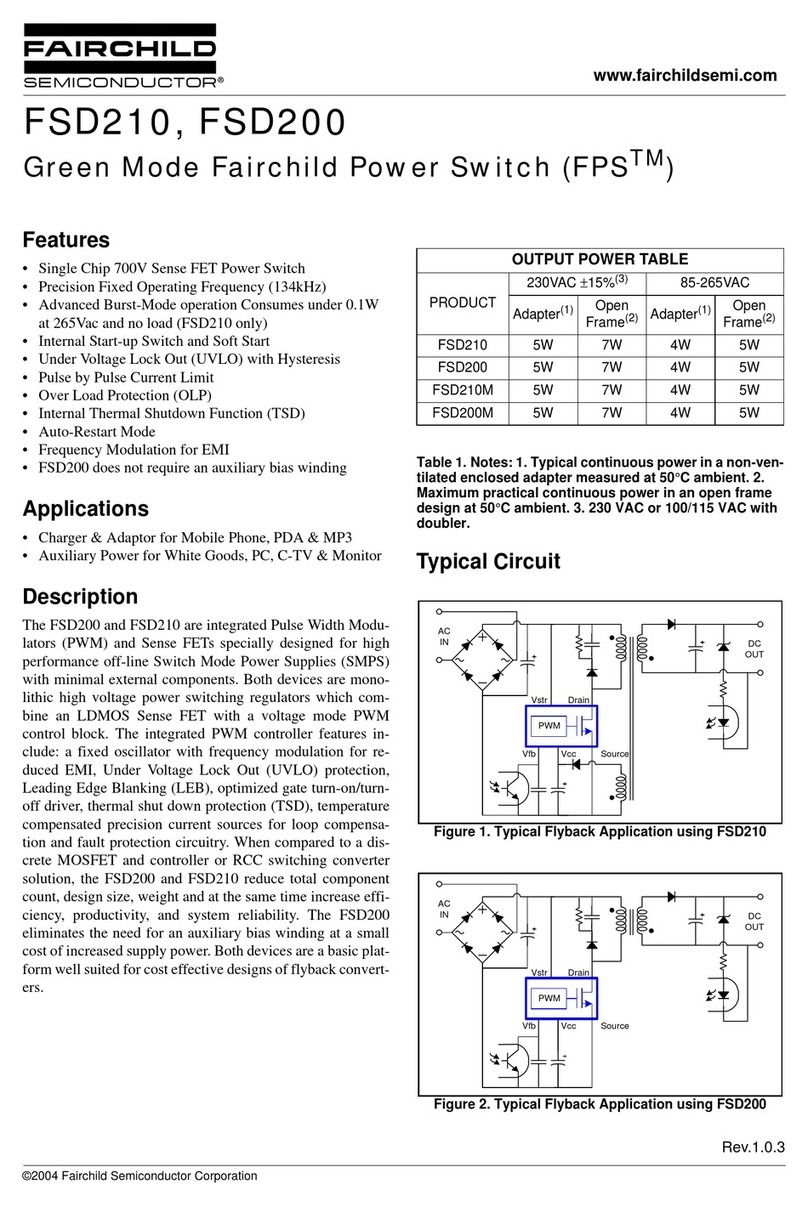FSD200
7
Product Information
Basic system topology of FSD200/210 is the same as
the original FSDH565/0165 devices. The FSD210
devices require a bias winding, whereas the FSD200
devices do not. Other features of the two types of
devices are almost the same and are listed below.
Figure 1. Line-up Table
Functional Description
1. Startup : At startup, an internal high voltage current
source supplies the internal bias and charges the
external Vcc capacitor as shown in Figure 1. In the
case of the FSD210, when Vcc reaches 8.7V the
device starts switching and the internal high voltage
current source is disabled. The device continues to
switch provided that Vcc does not drop below 6.7V.
After startup the bias is supplied from the auxiliary
transformer winding. In the case of FSD200, Vcc is
continuously supplied from the external high voltage
source and Vcc is regulated to 7V by an internal high
voltage regulator (HV Reg). The internal startup switch
is not disabled and an auxiliary winding is not required.
Figure 2.
Figure 2. Internal startup circuit
2. Feedback Control : The FSD200/210 are voltage
mode devices as shown in Figure 3. Usually, an opto-
coupler and KA431 type voltage reference are used to
implement the feedbacknetwork. The feedback voltage
is compared with an internally generated sawtooth
waveform. This directly controls the duty cycle. When
the KA431 reference pin voltage exceeds the internal
reference voltage of 2.5V, the optocoupler LED current
increase pulling down the feedback voltage and
reducing the duty cycle. This will happen when the
input voltage increases or the output load decreases.
3. Leading edge blanking (LEB) : When the MOSFET
turns on, there will usually be a large current spike
through the MOSFET. This is caused by primary side
capacitance and secondary side rectifier reverse
recovery. This could cause premature termination of
the switching pulse if it exceeded the over-current
threshold. Therefore, the FPS uses a leading edge
blanking (LEB) circuit. This circuit inhibits the pver-
current comparator for a short time after the MOSFET
is turned on.
Figure 3. PWM and feedback circuit
4. Protection Circuit : The FSD200/210 has 2 self
protection functions: over-load protection (OLP) and
thermal shutdown (TSD). Because these protection
circuits are fully integrated into the IC with no external
components, system reliability is improved without cost
increase. If either of these functions are triggered, the
FPS starts an auto-restart cycle. Once the fault
condition occurs, switching is terminated and the
MOSFET remains off. This cause Vcc to fall. When Vcc
reaches the UVLO stop voltage (6.7:FSD210,
6V:FSD200), the protection is reset and the internal
high voltage current source charges the Vcc capacitor.
When Vcc reaches the UVLO start voltage
(8.7V:FSD210, 7V:FSD200), the device attempts to
resume normal operation. If the fault condition is no
longer present start up will be successful. If it is still
present the cycle is repeated. This is shown in Figure 4.
ooooBurst function
145℃(Hys 50℃)145℃(Hys 50℃)145℃(Hys 50℃)145℃(Hys 50℃)Thermal Shutdown(typ.)
6W4W6W4W85~265VAC
Output
Power
Package Type
Operating Current (max)
Frequency Modulation
Switching Frequency
Current Limit (typ.Iover)
On-state Resistance (max)
Breakdown vol tage (min)
Product Parameter
7DIP/7SMD7DIP/7SMD7DIP/7SMD7DIP/7SMD
Without Bias WindingWith Bias Winding
770uA770uA770uA770uA
134kHz134kHz134kHz134kHz
±4kHz
0.3A
32ohm
700V
BCDMOS
FSD200
±4kHz
0.3A
32ohm
700V
BCDMOS
FSD210
±4kHz
0.48A
18ohm
700V
BCDMOS
FSD211
18ohm
±4kHz
0.48A
700V
BCDMOS
FSD201
ooooBurst function
145℃(Hys 50℃)145℃(Hys 50℃)145℃(Hys 50℃)145℃(Hys 50℃)Thermal Shutdown(typ.)
6W4W6W4W85~265VAC
Output
Power
Package Type
Operating Current (max)
Frequency Modulation
Switching Frequency
Current Limit (typ.Iover)
On-state Resistance (max)
Breakdown vol tage (min)
Product Parameter
7DIP/7SMD7DIP/7SMD7DIP/7SMD7DIP/7SMD
Without Bias WindingWith Bias Winding
770uA770uA770uA770uA
134kHz134kHz134kHz134kHz
±4kHz
0.3A
32ohm
700V
BCDMOS
FSD200
±4kHz
0.3A
32ohm
700V
BCDMOS
FSD210
±4kHz
0.48A
18ohm
700V
BCDMOS
FSD211
18ohm
±4kHz
0.48A
700V
BCDMOS
FSD201
Vin,dc
Vstr
Vcc HV
Reg.
Vin,dc
Vstr
Vcc
7V
Vcc>8.7V
off
Vcc<6.7V
on
Istr Istr
FSD21x FSD20x
4
OSC
Vcc Vref
5uA 0.25mA
VSD
R
FB Gate
driver
OLP
Vfb
KA431
Cfb
Vo

